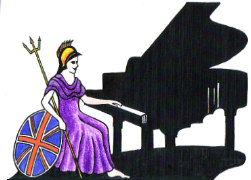Teachers, Accompanists and Piano Entertainers in the UK

UK Piano Page

3 Canal Street
Paisley, Renfrewshire PA1 2HD
Scotland
P. S. Pianos. A specalist piano shop. Being a
117 Narborough Rd
Leicester, Leicestershire LE3 0PA
England
Keysound Looking for music shops in Leicester? We
34 Engate Street
London
Lewisham, London SE13 7HA
England
Robert Morley & Company Limited, established 1881
24 Coronet Stree
Haggerston
Bridport Place, London N16HD
England
Thornhill Pianos is a family business selling and
134 Islingword Road
Brighton, East Sussex BN2 9SH
England
Pianola sales and services. Music rolls sales and
Music Festival for performers and guests Our 10th
18-06-2022 12:30PM
The Morecambe Bay Piano Group was set up to extend
11-12-2021 01:00PM
The Morecambe Bay Piano Group was set up to extend
08-01-2022 01:00PM
The Morecambe Bay Piano Group was set up to extend
12-02-2022 01:00PM